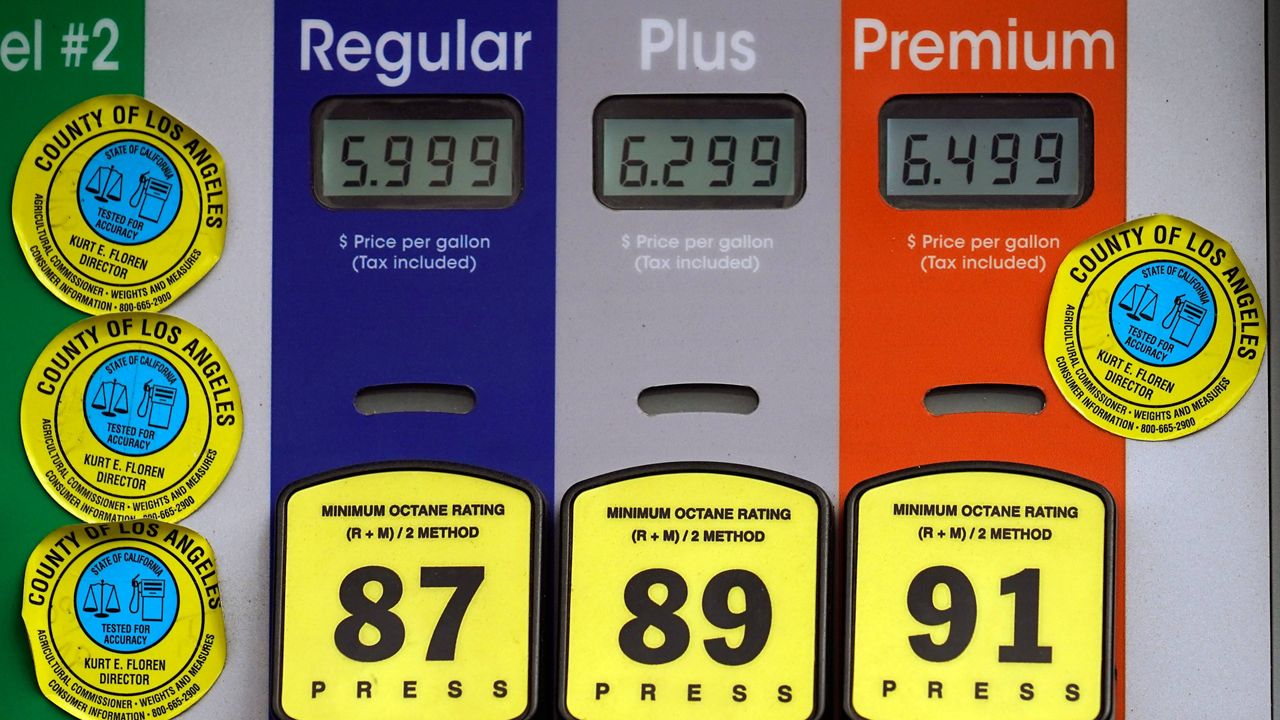Prices for U.S. consumers jumped 6.2% in October compared with a year earlier as surging costs for food, gas and housing left Americans grappling with the highest inflation rate since 1990.
What You Need To Know
- Prices for U.S. consumers jumped 6.2% in October compared with a year earlier as surging costs for food, gas and housing left Americans grappling with the highest inflation rate since 1990
- The year-over-year increase in the consumer price index exceeded the 5.4% rise in September
- From September to October, prices jumped 0.9%, the highest month-over-month increase since June
- Inflation is eroding the strong gains in wages and salaries that have flowed to America's workers in recent months, creating political headaches for the Biden administration and congressional Democrats
The year-over-year increase in the consumer price index exceeded the 5.4% rise in September, the Labor Department reported Wednesday. From September to October, prices jumped 0.9%, the highest month-over-month increase since June.
Inflation is eroding the strong gains in wages and salaries that have flowed to America's workers in recent months, creating political headaches for the Biden administration and congressional Democrats and intensifying pressure on the Federal Reserve as it considers how fast to withdraw its efforts to boost the economy.
In a statement after the release from the Labor Department, President Joe Biden said that reversing the growing trend of inflation "is a top priority for me," noting that it hurts Americans in their pocketbooks."
Job gains and pay raises have been much healthier during the pandemic recovery than they were after the Great Recession roughly a decade ago. But in contrast to the years that followed that downturn, inflation is now accelerating and diminishing Americans' confidence in the economy, surveys have found.
Excluding the volatile food and energy categories, so-called core prices rose 0.6% in from September to October. Core prices are now up 4.6% compared with a year ago.
Energy costs soared 4.8% just from September to October, with gasoline, natural gas and heating oil surging for the same reason that many other commodities have grown more expensive: Demand has risen sharply as Americans are driving and flying more, but supplies haven't kept up.
"The largest share of the increase in prices in this report is due to rising energy costs — and in the few days since the data for this report were collected, the price of natural gas has fallen," Biden noted. "I have directed my National Economic Council to pursue means to try to further reduce these costs, and have asked the Federal Trade Commission to strike back at any market manipulation or price gouging in this sector."
Biden said that "price increases reflect the ongoing struggle to restore smooth operations in the economy in the restart" and touted his recently passed $1.2 trillion bipartisan infrastructure bill as a way to reduce supply chain bottlenecks, lower costs and make products more available and less costly.
He also urged Congress to pass his $1.7 trillion Build Back Better bill, "which is fully paid for and does not add to the debt, and will get more Americans working by reducing the cost of child care and elder care, and help directly lower costs for American families by providing more affordable health coverage and prescription drugs —alongside cutting taxes for 50 million Americans including for most families with children."
Economists still expect inflation to slow once supply bottlenecks are cleared and Americans shift more of their consumption back to pre-pandemic norms. As COVID-19 fades, consumers should spend more on travel, entertainment and other services and less on goods such as cars, furniture, and appliances, which would reduce pressure on supply chains.
But no one knows how long that might take. Higher inflation has persisted much longer than most economists had expected. And inflation is spreading well beyond items like appliances and new and used vehicles that are directly affected by the pandemic.
"The inflation overshoot will likely get worse before it gets better," said Goldman Sachs economists in a research note Sunday.
For months, Federal Reserve Chair Jerome Powell had described inflation as "transitory," a short-term phenomenon linked to labor and supply shortages resulting from the speed with which the economy rebounded from the pandemic recession. But last week, Powell acknowledged that higher prices could last well into next summer.
The Fed chair announced that the central bank will start reducing the monthly bond purchases it began last year as an emergency measure to boost the economy. Investors now expect the Fed to raise its benchmark interest rate twice next year from its record-low level near zero — much earlier than they had predicted a few months ago.
Many large companies are passing on the cost of higher pay to their customers, and in some cases, consumers are paying up rather than cutting back.
To attract workers, for example, McDonald's boosted hourly pay 10% to 15% over the past year. To help cover those higher labor costs as well as more expensive food and paper, the company said last month that it raised prices 6% in the July-September quarter from a year earlier. Yet even so, company sales leapt 14% as virus restrictions eased.
Other companies have been more cautious. One of them, Wayfair, an online furniture retailer, said last week that its costs are rising as factories in Asia have shut down amid COVID outbreaks, ports are jammed, and labor costs have surged. But the company isn't necessarily passing along all those higher costs.
"We are in a mass-oriented business where the average customer does not have an unlimited discretionary budget," said Michael Fleisher, Wayfair's chief financial officer. "Inflation is rampant across the economy, and there are competing demands for their time and wallet share."



